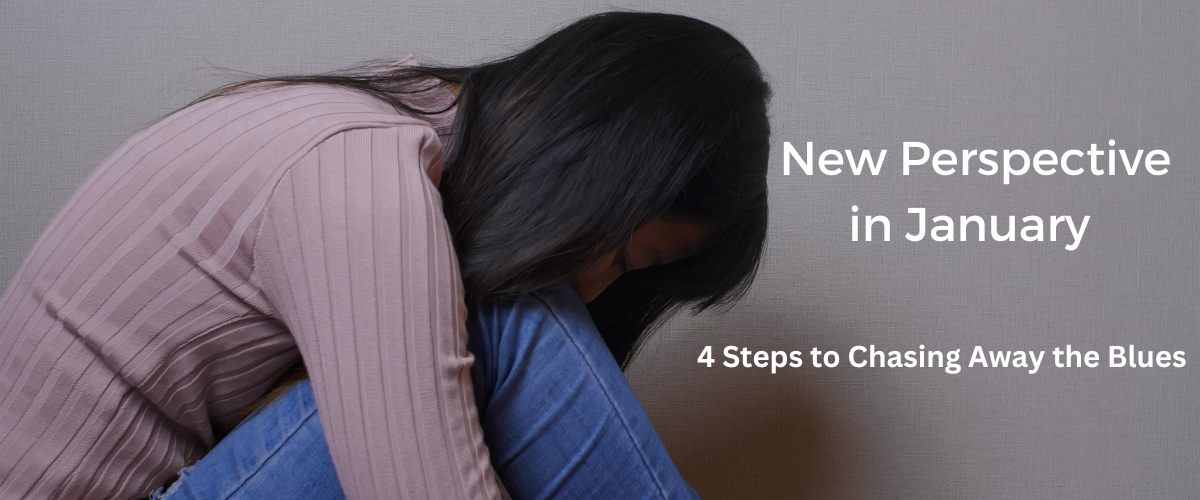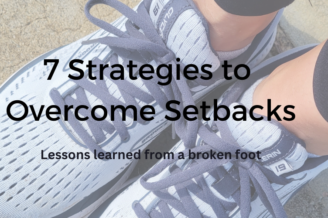
Did you know that many people struggle with depression in January, and it is considered the most depressing month? It does make sense, though. December is normally a busy month full of time with family and friends. It is a time of excitement, and even though the sky gets dark earlier, the Christmas lights and decorations seem to give things a cheerier appearance. When January hits, life goes back to “normal” for most people and that means the day-to-day grind. For some the beginning of a new year may be a reminder of losses or things that they had hoped to achieve yet did not in the previous 12 months.
Perspective and Thoughts
The good news is that there are things that can help with that feeling of depression when January hits. The word perspective comes up quite often in my circles. It was just brought up yesterday by one of my brothers. Grasping the concept of perspective is the key to the next steps moving forward when the January blues hit. Perspective has to do with our thoughts. If you look the word up in the dictionary, the definitions found are, “a mental view or prospect” or “the interrelation in which a subject or its parts are mentally viewed.” If our thoughts can be managed, we may be better able to overcome the feelings of depression in the midst of a cold, dark month.
There is Hope
The facts are when January 2 rolls around, the holidays are over; the days are shorter; the weather is generally drearier; and most of us are back to the day-to-day grind. The transition to a happier month may be held in a few steps that help change our perspective or thoughts on the circumstances that we find ourselves in.
Step 1- Gratitude
One practice that has been proven over and over again to improve mental health is gratitude journaling. Yes, it is a theme that I focus on, but it can be one of the easiest ways of changing our perspective. So many experts use the simple practice of expressing thanks to improve their general outlook on life. It causes a shift in perspective from focusing on what we do not have to focusing on what we do and what is good.

Step 2- Movement
Another practice that can boost positive feelings is movement. The reality is that January is cold, and some of us DO NOT like exercising in the cold. It is not my favorite either, but I have noticed in my life that my mood is better when I do get exercise outdoors even in the cold months. If you truly cannot handle the cold, there are so many ways to incorporate movement indoors. Find something that you like and try it. See if that activity gives you a more positive outlook and helps you feel good about accomplishing it. Turn up the music and have fun!

Step 3- Nutritious Foods
In December we enjoy the yummy holiday food and treats. Come January, we may suffer the aftermath of the extra sugar, fats, and carbs as well as missing those tasty treats. A shift in focus to more nutritious foods may give us the healing nutrients that we need for both mind and body. It is a great month to enjoy some savory soups packed with veggies or a nice warm cup of tea. There is comfort in warm foods on a cold winter day that also might boost your mood.
Step 4- Self Care
Lastly, remember to be kind to yourself. Make time for self-care. A relaxing bath with essential oils such as lavender may help. Curl up with a good book if you like to read. Give yourself the freedom to plan a relaxing evening for a movie or treat. Buy yourself some fresh flowers to brighten your home. The research shows that if we beat ourselves up or think negatively about ourselves, we hinder the chance for progress. When we are kind and extend ourselves grace, we actually improve positive outcomes for ourselves.

If January is a hard month for you, I hope that you find these steps helpful. It is all about taking the little steps each day to improve our mindset and therefore improve our overall health. It is not going to be perfect, but we can celebrate the wins each day when we move in a positive direction.
Are you struggling with where you are in your health? Two resources that I have available right now are the Stress Management Strategies Course and an e-book called Grit: Your Guide for Sustainable Transformation. This is the last week to get the Stress Relief Strategies Course for $19. The price increases in February. The e-book is avaialbe at no cost. Both of these are available on the Courses Page. My goal at Sustainable Coaching is to help others find sustainable change to help them achieve a feeling of wellness. If I can be of help to you, please do not hesitate to reach out and schedule a free discovery call today.




